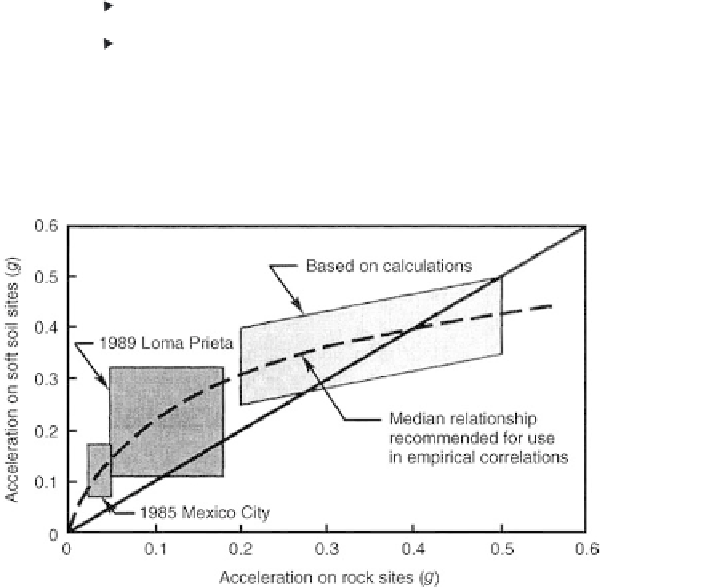Environmental Engineering Reference
In-Depth Information
Ground Amplification Factors
The Uniform Building Code (UBC, 1994) provides the normalized response spectrum for
various soil types given in
Figure 11.20.
Such relationships should be considered as
guides. Seismic response during the Loma Preita earthquake (1989) yielded spectral
amplification factors for deep stiff clay sites in the order of 3 to 8, indicating that the seis-
mic hazard at these sites may be underestimated (Bray, 1995).
Idriss (1991) studied the amplification of the peak ground acceleration recorded for the
Mexico City and Loma Preita earthquakes. The results are given in
Figure 11.21.
Idriss
concluded that the large accelerations for soft soil should tend to decrease rapidly as rock
accelerations increase above about 0.1
g
.
Ground amplification factors are most reliably obtained from accelerograms from the
site or from sites having similar conditions, and even these must be evaluated in the light
of source distance and foundation depths. The database will improve with increasing
strong motion data from accelerographs.
4
Soil Type III
Soft to medium clays and sands
Soil Type II
Deep cohesionless or
stiff clay soils
Soil Type I
Rock or very
stiff soils
3
2
1
FIGURE 11.20
UBC (1994) normalized acceleration
response spectra. (After Bray, J.D.,
The
Civil Engineering Handbook,
CRC Press,
Boca Raton, Florida, 1995, Chap. 24,
Figure 24.3.)
0
0
0.5
1.0
1.5
2.0
2.5
3.5
Period
T
(sec)
FIGURE 11.21
Variations in peak horizontal accelerations (PHGA) at soft soil sites with accelerations at rock sites. (After Idriss,
I.M.,
Proceedings of the 2nd International Conference on Recent Advances in Geotechnical Engineering and Soil Dynamics,
St. Louis, MO, Illinois, 1991, pp. 2265-2273.)












